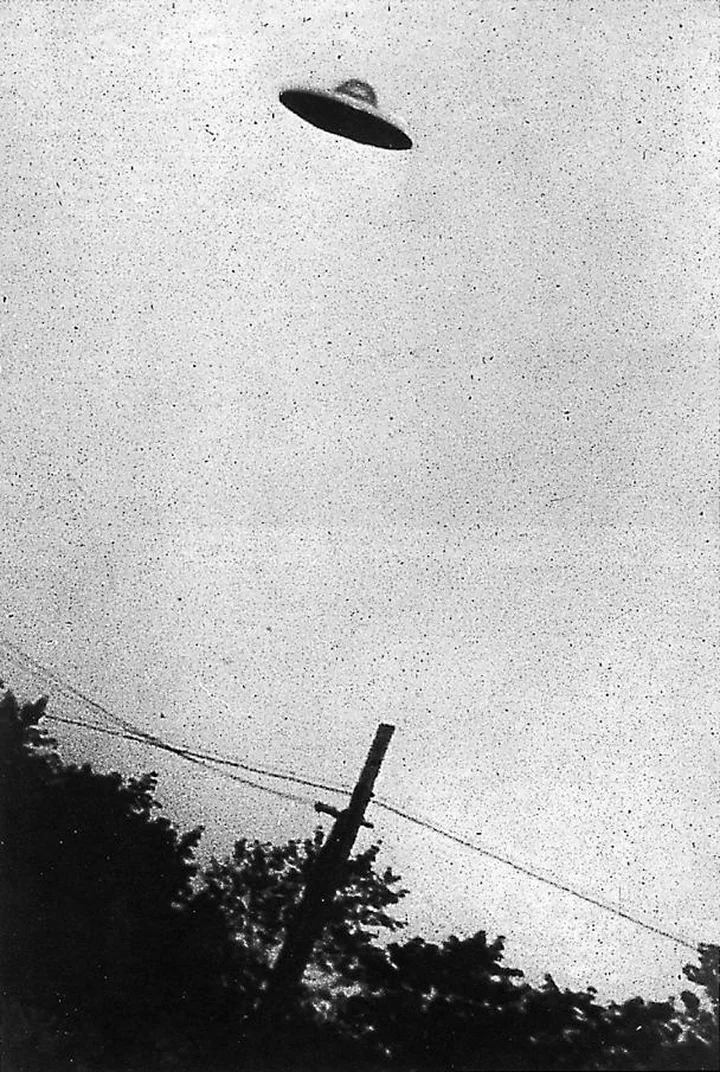A few years ago, the US government quietly went from UFOs to UAPs: Unidentified Flying Objects to Unidentified Aerial Phenomena. It was a calculated move, designed to fool nobody: UFOs are firmly in the “Aliens are here, checking us out” meme to “it’s OK folks, it’s not aliens, it’s just balloons, or Chinese-Russian drones, or Venus, or something we don’t understand, not aliens, trust us, we’re the government” label.
In a report issued a year ago by the Office of the Director of National Intelligence, “Preliminary Assessment: Unidentified Aerial Phenomena,” the word “alien” is conspicuously absent. Instead we have: airborne clutter (balloons, birds, drones, etc.); natural atmospheric phenomena (ice crystals and the like that show up as radar blips); US government or US industry developmental programs; foreign adversary (specifically, Chinese and Russian) systems; and a catchall “other” bin (“…pending scientific advances that allowed us to better understand them”). Not an alien in sight.
Not that the name-swap has done any good with true-believers. Those fuzzy infra-red fighter jet clips, released by the Pentagon in 2020 (explained to death by Mick West)? Aliens. The Roswell weather balloon? Aliens. Crop circles created by pranksters? Aliens. Abduction stories, usually involving an instrument shoved up the abductee’s ass? Aliens. Virtually anything you can’t explain? Aliens. Thanks, Hollywood!
The infamous 2004 GOFAST video. Commander David Fravor, flying a jet off the USS Nimitz, claimed that the object (shaped like a Tic Tac) was about 40 feet long, despite having no way of knowing how far away it was and therefore subject to parallax error. (It was probably a weather balloon much closer than he thought.) (US Navy, Public Release)
Back in the 1950s, 1960s and 1970s, a cottage industry was built around photographs of flying saucers and, sometimes, of their extraterrestrial occupants. Yep, we — some folks (mostly, for some reason, in Red States!) got great photos, proof positive of their alien encounters. Except, wouldn’t you know it, when they went to get the film processed (per-digital cameras), those sneaky ETs had erased the images, or caused them to be blurry beyond recognition.
They’re here! UFO over Passaic, New Jersey in 1952. (Public domain, via Wikimedia.)
But that’s no problem today! On a planet with eight billion people (exactly, per the United Nations, last November 15) and around six billion smartphones — most of which can stream images as they’re taken, that shouldn’t be a problem. Now we can readily obtain proof of what we see, be it details of their spacecraft or the aliens themselves, and prove to the world that we weren’t stoned or hypnotized or just (gasp) making up stories to sell to the papers! Should be easy, right?
Except, since the advent of digital cameras, and especially the ability to stream in real time, there’s been a positive dearth of such images. I guess the aliens, shy by nature, figured out our technology just in time to stop making appearances.
By the way, a side note: why are aliens, in movies, books and National Inquirer stories, almost always depicted as evil, Earth invading bad guys? (“The Day the Earth Stood Still” and Spielberg’s “ET” were rare exceptions.) I think you can make a good case that an intelligent species that is also aggressive and prone to taking sides, like our own, is unlikely to survive more than a few generations after inventing weapons of mass destruction. As evidence, I offer: the Cuban missile crisis, the 1983 Soviet false alarm incident, Putin’s current nuclear threats, and our apparent inability to reduce our (January 2022) 12,705 nuclear warheads, despite have more than enough to “keep raising the dust” on cities we’ve already destroyed. That is, any alien species that’s survived long enough to figure out long-distance (really long!) interstellar travel is likely to be peaceful. As Neil deGrasse Tyson put it in one of his StarTalk videos, “Our knowledge of aliens is derived not from how they would behave, but how we would behave.”
I’ll let Neil close out this rant. “The fact that you don’t know what it is, is not evidence that you know what it is.”

CLICK TO MANAGE